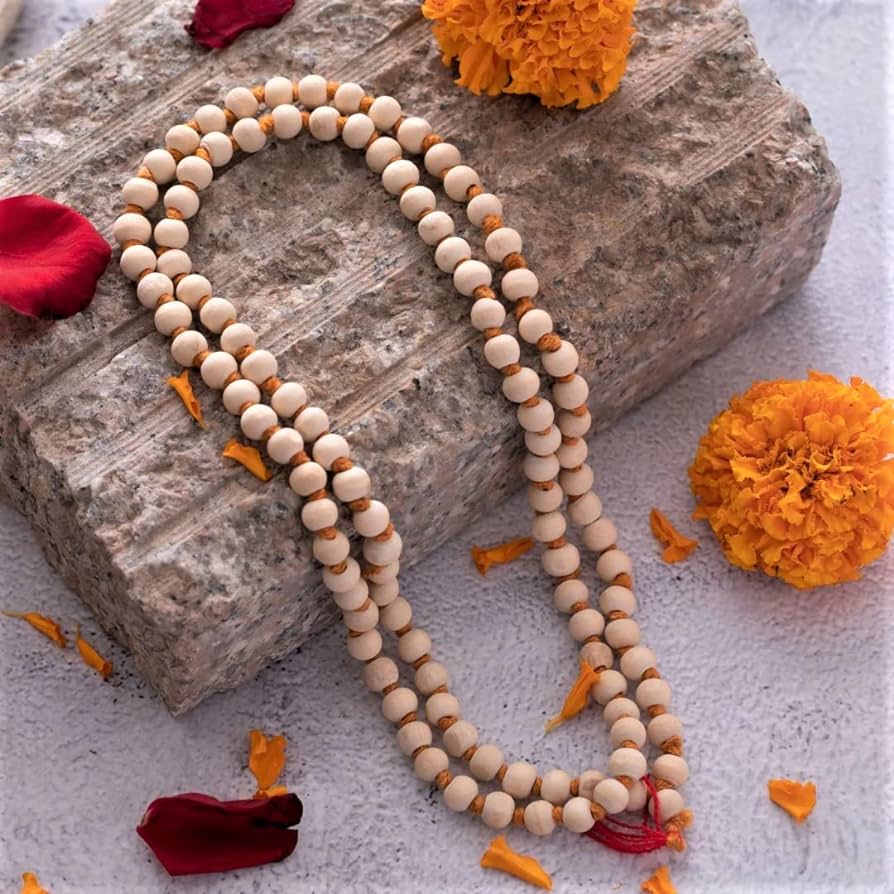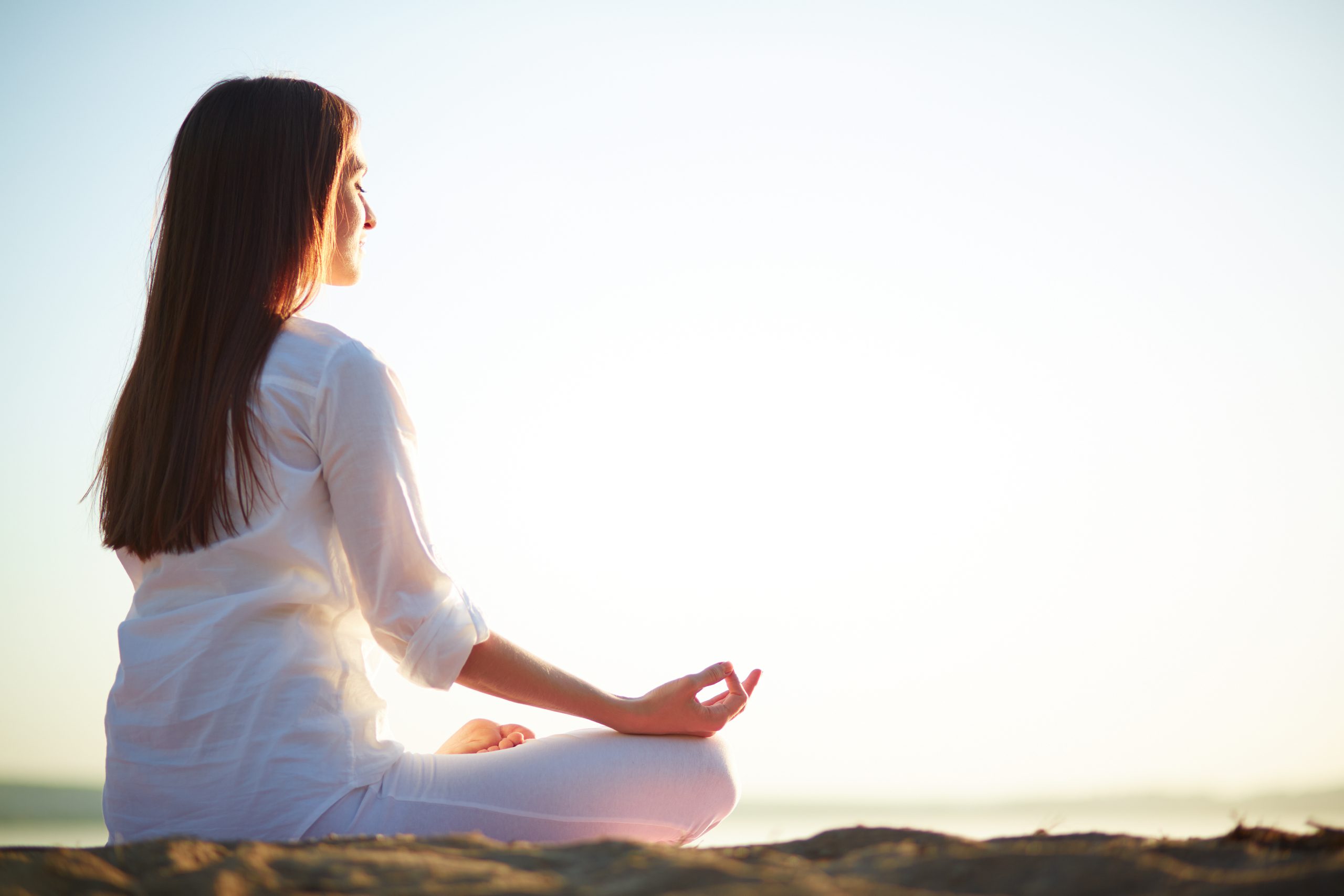The Mahamrityunjaya Mantra, also known as the Maha Mrityunjaya Mantra or the Tryambakam Mantra, is one of the most powerful and revered Hindu mantras. It is found in the ancient scripture known as the Rigveda and is dedicated to Lord Shiva, the destroyer and one of the principal deities in Hinduism. This mantra is chanted for protection, health, and to overcome the fear of death. It is believed to have the power to remove the fear of death and grant long life and good health.
The Mahamrityunjaya Mantra is as follows:
Translation: “Om. We worship the three-eyed one (Lord Shiva), who is fragrant and who nourishes well all beings. May He liberate us from death for the sake of immortality, even as the cucumber is severed from its bondage to the creeper.”
This mantra is often used in meditation, prayer, and during rituals and ceremonies, especially those related to Lord Shiva or for healing purposes. Chanting it is believed to bring spiritual and physical benefits and help in overcoming difficulties and challenges.
Table of Content
Benefits
The Mahamrityunjaya Mantra is a powerful and revered mantra in Hinduism, and it is found in the Rigveda. It is also known as the Moksha Mantra or the Death-Conquering Mantra. Chanting or reciting this mantra is believed to have several benefits:
- Protection from Death: The primary benefit of the Mahamrityunjaya Mantra is to seek protection from untimely death, accidents, and fatal diseases. It is often chanted for the well-being and longevity of individuals.
- Healing: It is also believed to have healing properties and is used as a prayer for the recovery of those who are ill. It is said to promote physical and mental well-being.
- Spiritual Growth: Chanting the Mahamrityunjaya Mantra is said to facilitate spiritual growth and inner peace. It is believed to help one transcend the cycle of birth and death.
- Mental Calmness: Regular recitation of the mantra can have a calming effect on the mind and reduce stress and anxiety. It is often used in meditation for this purpose.
- Overcoming Obstacles: The mantra is associated with the removal of obstacles and difficulties in life. It can be chanted to overcome challenges and adversity.
- Blessings for Loved Ones: Many people chant this mantra for the well-being of their loved ones, seeking divine protection and blessings for their family and friends.
- Purification: Chanting the Mahamrityunjaya Mantra is believed to purify the soul and cleanse negative energies, leading to a sense of inner purity.
- Positive Energy: It is said to attract positive energies and dispel negative forces, creating a protective shield around the individual.
- Devotion: For those on a spiritual path, the mantra is a powerful tool for expressing devotion to Lord Shiva, one of the principal deities in Hinduism.
- Self-Realization: Some practitioners believe that chanting the Mahamrityunjaya Mantra can help in attaining self-realization and a deeper understanding of one’s purpose in life.
It’s important to note that the effectiveness of the Mahamrityunjaya Mantra is often tied to one’s faith, belief, and sincerity while chanting it. Different individuals may experience different results, but many find solace, comfort, and inspiration in the regular recitation of this mantra.
How To Do
The Mahamrityunjaya Mantra, also known as the Maha Moksha Mantra, is a powerful Hindu mantra dedicated to Lord Shiva. It is chanted for protection, good health, and to overcome the fear of death. The mantra is as follows:
ॐ त्र्यम्बकं यजामहे सुगन्धिं पुष्टिवर्धनम् उर्वारुकमिव बन्धनान्मृत्योर्मुक्षीय माऽमृतात्॥

Here’s how you can perform the Mahamrityunjaya Mantra:
- Preparation: Find a quiet and peaceful place where you can sit or stand comfortably. Ensure you have a mala (prayer beads) with 108 beads or use your fingers for counting.
- Set an Intention: Before you start chanting, set an intention or pray for what you seek from this mantra, whether it’s healing, protection, or inner peace.
- Focus and Concentration: Close your eyes and take a few deep breaths to calm your mind. Visualize Lord Shiva or think about the purpose of your chant.
- Chant the Mantra: Start chanting the Mahamrityunjaya Mantra using your mala or fingers. Hold the mala with your right hand and move one bead at a time as you chant the mantra. Chant the mantra with devotion and sincerity.
- Counting Beads: As you chant, move your thumb to the next bead after each repetition. Continue this process until you have completed 108 repetitions. If you don’t have a mala, you can use your fingers to keep track.
- Duration: You can chant the Mahamrityunjaya Mantra for as long as you wish. Many people find it beneficial to chant it for 108 times daily or during specific times of the day, such as in the morning or before sleep.
- Closing: After you have completed your desired number of repetitions, take a moment to sit in silence and meditate. Reflect on your intention and the positive energy generated by the mantra.
- Aarti and Prayers: You can conclude your practice with an aarti or by offering water, flowers, or incense to an image or idol of Lord Shiva. Offer your prayers and gratitude for the benefits you seek.
It’s important to chant the Mahamrityunjaya Mantra with a pure heart, concentration, and devotion. The mantra is believed to have healing and protective qualities, and the more sincerely you practice it, the more profound its effects are thought to be.
Best Place
The Mahamrityunjaya Mantra is a powerful Hindu mantra dedicated to Lord Shiva, believed to have the power to conquer death and bring healing and rejuvenation. Chanting or reciting this mantra is often done for spiritual and health benefits. If you are looking for the best places to chant or meditate on the Mahamrityunjaya Mantra, you can consider the following:
- Temples: Visiting a Shiva temple or any other Hindu temple that has a dedicated space for meditation and prayer is a great place to chant this mantra. Temples are considered sacred and spiritually charged locations, making it an ideal setting for your practice.
- Riverbanks: Many people find solace and a deep connection to nature by chanting the Mahamrityunjaya Mantra on the banks of a river, especially the Ganges in India, which is considered highly auspicious.
- Yoga Retreats and Ashrams: Yoga retreats and ashrams often offer serene and spiritually charged environments for meditation and mantra chanting. Many of them conduct regular sessions for such practices.
- Sacred Sites: There are various sacred sites in India and Nepal, such as Kashi (Varanasi), Mount Kailash, and Pashupatinath Temple, where chanting the Mahamrityunjaya Mantra can be a profound experience.
- Quiet Natural Settings: You can chant the Mahamrityunjaya Mantra in quiet and peaceful natural settings, like forests, mountains, or gardens. Being in nature can enhance the spiritual experience.
- Home Shrine: If you prefer a more private setting, you can set up a small shrine or meditation corner in your home where you can regularly chant the Mahamrityunjaya Mantra. Many people have a dedicated space for their spiritual practices at home.
- Meditation Centers: Meditation centers and yoga studios often offer group meditation sessions, including mantra chanting. This can be a great way to connect with a community of like-minded individuals.
- Caves and Isolated Places: In some traditions, meditating or chanting in caves or isolated places is believed to bring profound spiritual experiences. However, this should be done with caution and proper preparation.
It’s essential to remember that the power of the Mahamrityunjaya Mantra is not limited to a specific place. You can chant it with devotion and sincerity wherever you feel comfortable and spiritually connected. The effectiveness of the mantra often depends on your intention and concentration.
Best Time
The Mahamrityunjaya Mantra is a powerful mantra from Hinduism, dedicated to Lord Shiva. It is believed to have the power to overcome fear and provide healing and rejuvenation. While there is no specific “best time” to chant the Mahamrityunjaya Mantra, it is often recommended to chant it during the following times for maximum benefit:
- Early Morning: Chanting the Mahamrityunjaya Mantra in the early morning, preferably during the Brahma Muhurta (approximately 1.5 hours before sunrise), is considered highly auspicious. This is a peaceful and spiritually charged time for meditation and prayer.
- During Shiv Ratri: Mahashivratri is a Hindu festival dedicated to Lord Shiva. Chanting the Mahamrityunjaya Mantra on this day, which falls on the 14th day of the dark fortnight of the month of Phalguna, is considered especially powerful.
- During Eclipse: Some practitioners believe that chanting the Mahamrityunjaya Mantra during a solar or lunar eclipse can have a profound impact. Eclipses are considered spiritually significant events in Hinduism.
- In Times of Illness or Distress: This mantra is often chanted when someone is going through a period of illness or distress. It is believed to provide healing and relief from suffering.
- Daily Practice: Many people incorporate the Mahamrityunjaya Mantra into their daily spiritual practice, either in the morning or evening. It can be chanted as many times as you feel comfortable, and consistency is more important than the specific time.

Side view of meditating woman sitting in pose of lotus against clear sky outdoors
Remember that the effectiveness of the mantra is not just about the time of day but also about your intention and devotion while chanting it. It’s important to chant it with sincerity and a focused mind. Also, the pronunciation and understanding of the mantra are crucial. If you are not familiar with the proper pronunciation and meaning of the mantra, it’s a good idea to learn it from a qualified teacher or guru.

